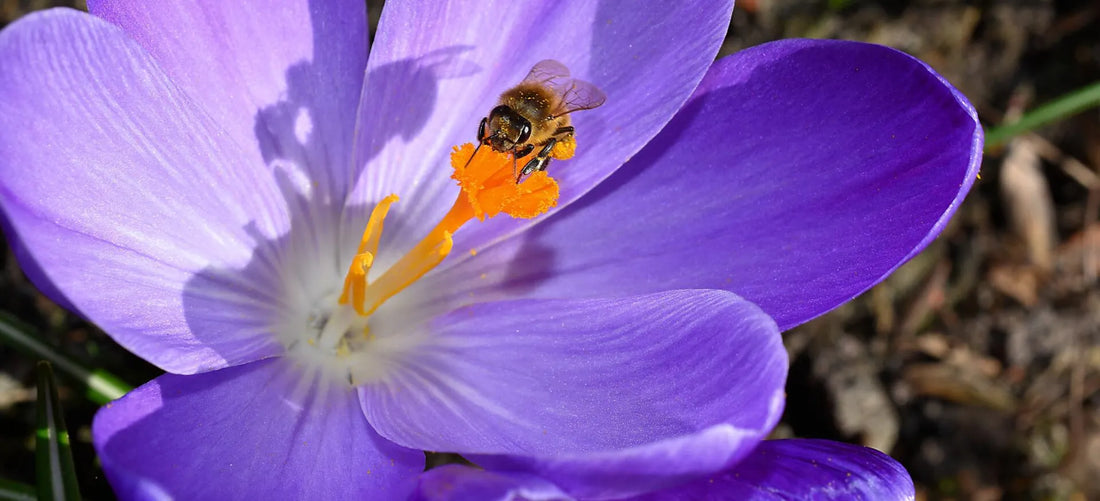There's not a more exciting time for nature than when spring arrives!
Birds sing, flowers bloom and all around us, wildlife is bursting into life. And no matter where you live, right outside your door, bees are buzzing into action again after hibernating during the winter.
Spring is one of the busiest times for bees, as bumblebees and solitary bees emerge from their nest to find food. For honeybees this is also when they restock their food supplies which they have been living off during the winter months, the queen bee will begin to lay eggs and new bee colonies are started. This means there are more young worker bees in the honeybee hive, who, in spring, must head out to collect food for the rest of the colony from the plants which are now flowering.
What's really exciting is that you can play an important part in helping these busy bees in spring too.
Here's what you can do today to help them on their way…

Plant grape hyacinths in the sun
The best thing you can do to help bees is to plant pollinator-friendly flowers. Planting plenty of these helps bees do their important job in our ecosystem as pollinators, by giving them a helping hand to gather the pollen they need. Bees are big fans of the blue-purple flowered grape hyacinth, which has a smaller flower than a regular hyacinth and provides lots of lovely pollen and nectar for them when it flowers in early spring. These plants can grow in sun or in light shade, and can be bought in pots from garden centres, already grown, right now, for an instant bee-friendly patch.

Plant snowdrops in the shade
These pretty white flowers contain lots of important food supplies for bees. You can plant them as bulbs in autumn so that they flower in spring, but if you didn't, don't worry! You can also plant them while they have leaves (also known as 'in the green') in early Spring - in fact, many gardeners say this gets much better results. Snowdrops are ideally planted in shady spots under shrubs and trees, where they'll make your garden look beautiful too.

Put up a bee hotel for solitary bees
When you think of bees you probably picture a honeybee or a bumblebee, but in fact 90% of the UK's bee population are solitary. Rather than live in a hive or nest, solitary bees live alone, and this means they could also do with a home to go back to after a busy day of pollination. You can buy ready-made wooden bee hotels for your garden, which are designed as the perfect place for bees to make themselves at home in, with lots of nooks and crannies for them to use to rest, build nests and lay eggs in.
Soon will be the perfect time to set it up: place your bee hotel outside in Spring, from March onwards.
You can also make your own bee hotel using an untreated wooden plank to create a box, and using reeds, bamboo canes and hollow stems to create lots of tunnels which bees can nestle into and have a ready-made tunnel to lay their eggs in. Then, all you need to do is attach it to a fence or post in a sunny spot and wait for your new hotel guests to check in!

Get ready for summer
In late Spring, you can also sow the seeds for new flowers which will bloom in summer, ready to help your local bees in a few months' time. Summer plants like Allium, foxglove, and catmint are some of wild bees' favourites.
You can make growing a bee-friendly garden even easier with these handy seedballs, each of which contains a carefully selected mixture of plants as recommended by the Bumblebee Conservation Trust, including Birdsfoot Trefoil, Foxglove, Red Clover, Viper's Bugloss and Wild Marjoram. Simply scatter them in a garden bed or plant pots in spring and watch them flower through the summer - growing a bee-friendly garden has never been simpler!
We hope this helps prepare your garden for bees this spring! If you have any questions please reach out as we'd love to hear from you.


